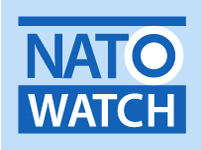Stars and Stripes reports that NATO's new Land Forces Command will be based in Izmir, Turkey and commanded by Lt. Gen. Frederick Hodges. A major focus of his work will be to share the lessons learned from Afghanistan, particularly in regard to managing the ‘interoperability’ of NATO forces. Force Command Heidelberg, Germany, and Force Command Madrid, Spain, are being deactivated as part of NATO’s transformation.
This transformation is part of a 2011 NATO decision designed to streamline the alliance’s overall command structure. Once fully implemented, it will result in a 30% reduction in manpower, taking Allied Command Operations from 13,000 personnel to about 8,800. The new Land Command will have about 350 people, down from around 800.
Land Command is responsible for ensuring readiness of NATO forces, conducting land operations and synchronizing land force command and control. Hodges intends to bolster the role of the enlisted force and emphasise the advantages of putting “more and more responsibility on NCOs”.
Hodges hopes to develop training exercises that would bring together allies in a rugged environment to test their logistical and communication abilities with the objective of making NATO Reaction Forces more effective. He said:
Turkey’s location from a geographic standpoint — adjacent to the Middle East, nearly adjacent to Russia — it’s an important location. It sends a signal not only to Turkey and the rest of the alliance. It sends a signal to the other neighbours.
This latest announcement is the practical application of decisions taken by NATO Defence Ministers in June 2011 to make NATO’s command structure leaner, more affordable, more efficient, more fit for purpose and more deployable, in line with a briefing by Brigadier General Patrick Wouters, Deputy Director Plans and Policy Division, International Military Staff (IMS):
This Land Command Headquarters will be situated in Izmir in Turkey and will essentially deal or try to gather all the land competency that is available in NATO for command-and-control of land operations essentially and also if you think collective defence, which still has, of course, in the New Strategic Concept also its place it will be the focus if NATO has to conduct multi-core operations.
For further details about the NATO Force Structure with its requirement to “ be able to rapidly deploy to crisis areas and remain sustainable, be it within or outside NATO’s territory, in support of both Article 5 and Non-Article 5 operations” see: http://www.nato.int/cps/en/SID-D8AC514E-502C9437/natolive/topics_69721.htm?selectedLocale=en
